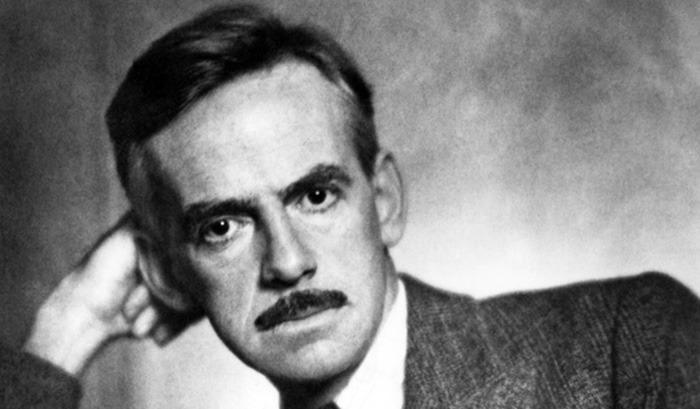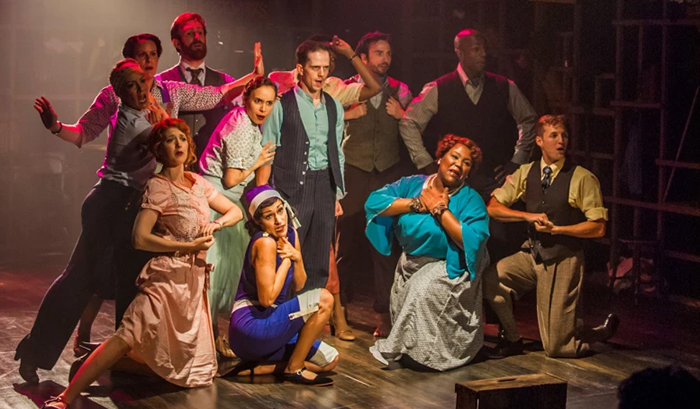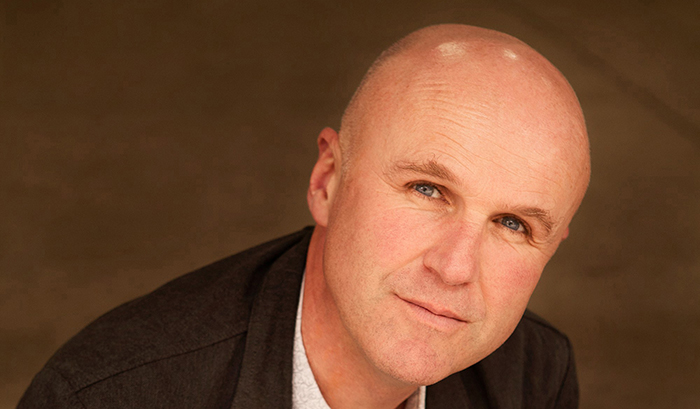Second of four parts
Re “Was 1939 Really Hollywood’s Golden Year?”
[Editor’s Note: Although 1939 is frequently considered the single strongest year for films in Hollywood history, our historian, Mr. Hawkins, counters that 1941 may have been superior. Today he continues his countdown after asserting that “Citizen Kane was No. 1 in 1941 and “The Maltese Falcon” No. 2.]
3. “Sullivan's Travels” was produced, directed and written by Preston Sturges, one of the most talented people in the film industry. Joel McCrea and Veronica Lake starred, with a featured cast of Sturges regulars: Franklin Pangborn, William Demarest and Porter Hall. McCrea, one of the most underrated actors in Hollywood, plays a famous director of screwball comedies who wants to make a serious drama, a la French and Italian neo-realists.
The film follows McCrea and Lake as they travel across the U.S. to research “Oh, Brother, Where Art Thou?” McCrea's proposed “realistic drama.”
Sullivan’s Travels glides from screwball comedy to drama without missing a beat. In one of the best dramatic scenes ever filmed, McCrea comes to realize that laughter is the greatest gift given to mankind.
However, the film was virtually ignored by the Academy. To the chagrin of several well-known film-makers, it was ignored when AFI picked its “Best 100 Films Ever Made.”
Starting in 1940, with “The Great McGinty,” which should be viewed by every politician, Sturges wrote, produced and directed two films a year for the next five years.
He won the Oscar for Best Original Screenplay for The Great McGinty in 1941. But Sturges hated the way his screenplays were being produced, and he gave Paramount The Great McGinty for one dollar, if he were allowed to direct it. They agreed to the deal but raised his fee to $10 for some mysterious reason.
Sample dialogue from McGinty:
(Politician) If it weren't for graft, you'd get a very low type of people in politics. Men without ambition. Jellyfish!
(Catherine McGinty) Especially since you can't rob the people anyway.
(Politician) How was that?
(Catherine McGinty) What you rob, you spend and what you spend goes back to the people, So where's the robbery? I read that in one of my father's books.
(Politician) That book should be in evey home.
By 1945, Sturges had burned himself out. In 1946, he went into partnership with Howard Hughes, which ended in complete frustration for him. He directed a few more films in the late 1940s but they were poorly received.
In 1959, when Sturges died, we can say prematurely, at the age of 60 in New York City, he was broke and forgotten.
Robert F. Slatzer, a writer-producer, told me that he paid for Sturges's funeral. He also had several of Sturges's unproduced screenplays in a storage facility in Hollywood. For several years, I tried to get Slatzer to let me read some of them but he never got around to it.
And then Slatzer, who claimed that he'd married Marilyn Monroe in Mexico in 1952, died in 2005 after a long illness.
4. “How Green Was My Valley.”
Directed by John Ford, the stars were Walter Pidgeon, Maureen O'Hara, Donald Crisp, Anna Lee, Roddy McDowell and Barry Fitzgerald.
It is the story of a Welsh mining family at the beginning of the 20th century, through the eyes of the youngest son, Huw Morgan, played by McDowell.
Originally, William Wyler was to direct the film, and he personally chose McDowell to play Huw. John Ford replaced Wyler as director. He wanted to make the film on location in Wales. World War II was raging in Europe, so filming in Wales was impossible. AWelsh mining village was built on the 20th Century Fox Ranch in the Santa Monica Mountains.
In later years, McDowell would recall that the making of How Green Was My Valley was one of his most pleasant working experiences.
It won four Academy Awards — for Best Picture, Best Director (John Ford), Best Supporting Actor( Donald Crisp as the patriarch of the Morgan family) and Best Cinematography (Arthur Miller).
Director John Ford was a bundle of contradictions.
Remembered today mostly for his Westerns, Ford was the only American director to win five Academy Awards (“The Informer,” “The Grapes of Wrath,” “How Green Was My Valley,” “The Battle of Midway” and “The Quiet Man”). None were Westerns.
Because of his close association with John Wayne — Ford directed him in 17 films— he was thought to be a conservative Republican. In reality, he was a lifelong Democrat and a friend of the Kennedys.
Best Supporting Actor Donald Crisp was one of the founding members of the American motion picture industry. He played Gen. Grant in D.W. Griffith's “Birth of a Nation,” and later became a director of silent films, including “The Navigator,” starring Buster Keaton. Crisp later became a character actor.
In 1990, How Green Was My Valley was selected for preservation in the U.S. Film Registry by the Library of Congress as being “culturally, historically or aesthetically significant.”
5. “Hold Back the Dawn.”
Directed by Mitchell Leisen, with a screenplay by Billy Wilder and Charles Brackett. Wilder would go on to direct such classics as “Double Indemnity,” “Lost Weekend,” “Stalag 17,” “Some Like It Hot,” “The Apartment” and “The Fortune Cookie.”
Charles Boyer, Olivia de Haviland and Paulette Goddard starred in Hold Back the Dawn.
Boyer plays a European gigilo stranded in a Mexican bordertown who marries spinster de Haviland to get into the United States. When he learns how much she loves him, Boyer undergoes a change of heart.
In one memorable scene, a Mexican woman is about to be deported at the American checkpoint when she suddenly gives birth to a baby boy, who automatically becomes an American citizen.
Hold Back The Dawn was nominated for five Academy Awards including Best Picture and Best Actress (de Haviland). Ironically, her sister, Joan Fontaine, won the Best Actress Award for her role in Alfred Hitchcock's “Suspicion.”
(To be continued Wednesday)
Mr. Hawkins may be contacted at rjhculvercity@aol.com







